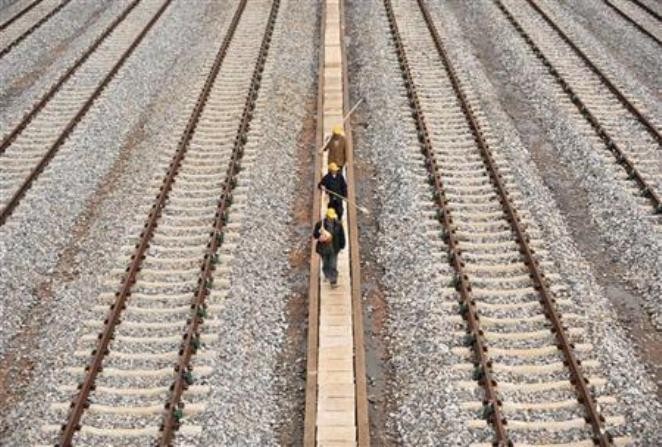The Chinese government will speed up the construction of the 1,629-kilometer Sichuan-Tibet railway starting this year as confirmed by the heads of the two regions' governments, China Daily reported.
"The government will start a preliminary survey and research of the Kangting-Lyingchi railway project this year, and accelerate the construction of Sichuan-Tibet railway in the 13th Five-Year Plan (2016-20) period," Losang Jamcan, chairman of the Tibet Autonomous Region government, said at the fourth session of the 10th People's Congress of Tibet in Lhasa on Wednesday, Jan. 27.
The report said that a similar message was sent out by Yin Li, acting governor of Sichuan, in the fourth session of the 12th People's Congress of Sichuan in Chengdu earlier.
The report said that the railway that connects Lhasa and Chengdu will be divided into three sections from west to east: Lhasa-Lyingchi, Lyingchi-Kangting, and Kangting-Chengdu. Nearly 1,000 km of the railway project is located in Tibet, the report added.
The construction of the west and the east sections began last year and the whole project is expected to be completed by early 2030s.
The railway project is more than 3,000 meters above sea level, and more than 74 percent of its length will be built on bridges or in tunnels. The railway will also pass through the mountains, the highest of which is over 7,000 meters.
Lin Shijin, a senior civil engineer at China Railway Corp., said that it will cross the major rivers of Minjiang, Jinshajiang and Yarlung Zangbo.
"The accumulated height it will climb reaches more than 14,000 meters, and it will cross many fault zones," Lin added. "It's like the largest rollercoaster in the world. With a designed service life of 100 years, it is believed to be one of the most difficult railway projects to build on Earth."
"It will cost at least 100 million yuan ($15.87 million) per kilometer, similar to the cost of high-speed railways on plains," Zhao Jinxue, a rail construction risk appraiser with an insurance company in Chengdu, said.
Lin said that builders of the Sichuan-Tibet railway will overcome multiple difficulties such as avalanches, earthquakes, landslides, terrestrial heat, karst caves and underground streams.
Currently, it takes 42 hours by train and three days by road to travel from Chengdu to Lhasa. With the Sichuan-Tibet railway, the travel time is expected to be reduced to less than 15 hours.
"I hope the railway can be finished as quickly as possible. Then, I'll take the train back home. It is more economical, safer and comfortable than airplanes," said Qiao Liang, a Chengdu businessman in Lhasa, who regularly commutes between the two places.
Southeast Tibet is the most populous region, while the west of Sichuan is the least developed region of the province. But the two regions have breathtaking natural views and fascinating ethnic cultures.
"The railway will effectively boost tourism, and bring a new Shangri-La to the world and tangible revenue to local people," He Ping, a tourism agency manager in Chengdu, said.



























